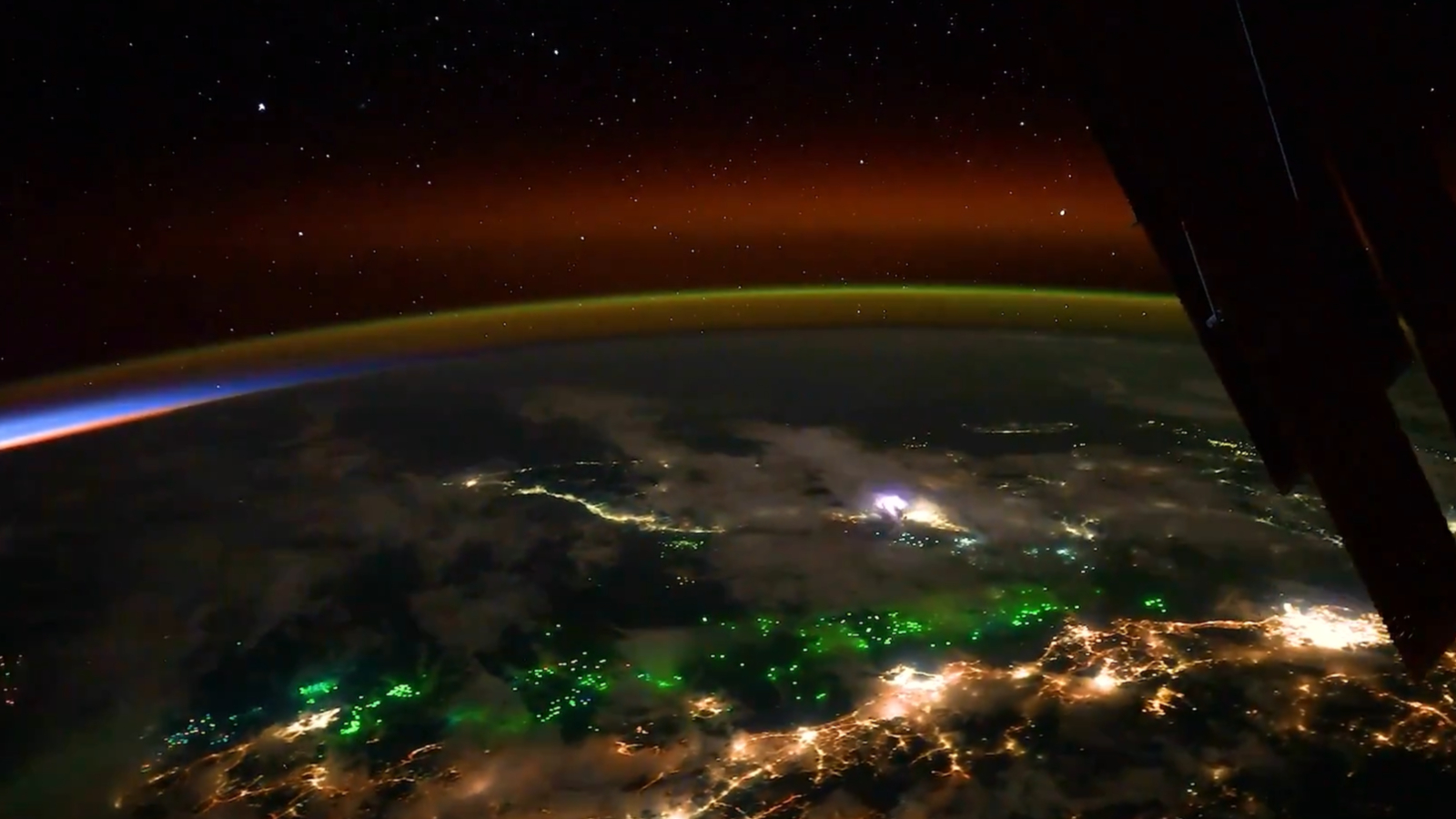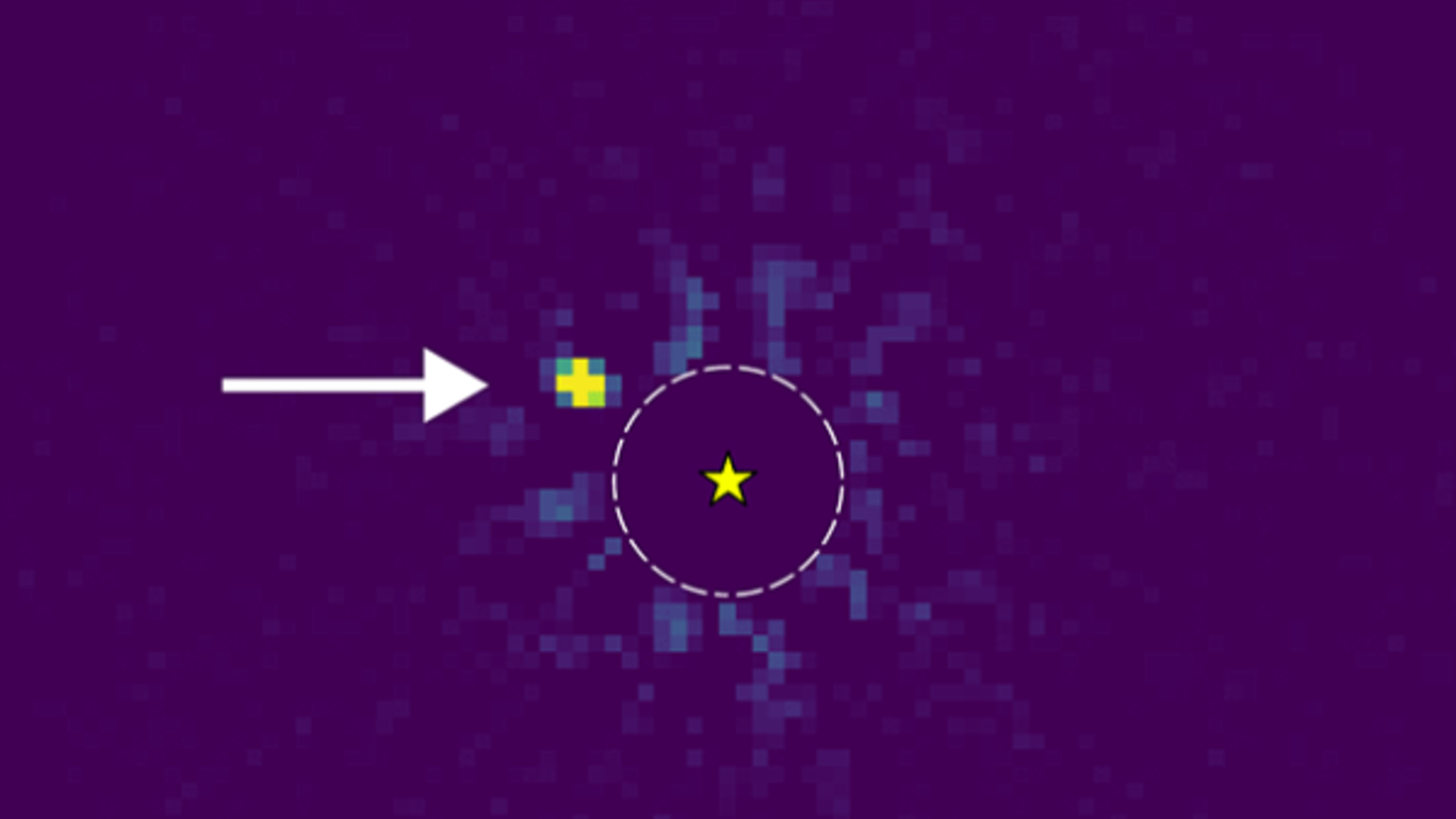NASA astronaut aboard ISS captures colorful aurora in time-lapse footage of Earth from space (video)
The time-lapse footage was captured by NASA astronaut Jonny Kim.

NASA astronaut Jonny Kim has posted his first time-lapse video of Earth from the International Space Station (ISS), showcasing stunning auroras, lightning storms and city lights illuminating the night-side of our planet's surface.
The former U.S. Navy SEAL launched to the ISS on April 8 earlier this year aboard a Russian-built Soyuz spacecraft, beginning an eight month tour of duty as flight engineer for Expedition 73. Prior to capturing his first time-lapse footage of Earth, Kim sought advice from fellow crewmember Nichole "Vapor" Ayers, who regularly posts stunning astrophotography on her social accounts that showcases the natural splendor of our 'Blue Marble'.
"Thanks to some instruction and tips from @Astro_Ayers, I caught my first aurora," wrote Kim in a Twitter/X post accompanying the time-lapse video. "After seeing the result, I told her this felt like fishing. Prepping the camera, the angle, the settings, the mount, then setting your timer and coming back to hope you got a catch. And after catching my first fish, I think I'm hooked. Thanks, Vapor!"
Kim's time-lapse captures a dizzying blend of natural phenomena and city lights on Earth's surface, as the space station's solar panels shifted position to gather the precious sunlight used to power the orbital outpost.
The footage begins with the sun setting behind Earth's disk, heralding the onset of night aboard the ISS - the 45 minute period when the station passes through our planet's shadow. Stars can be seen shining above the outline of our planet's dense, gaseous atmosphere as the sun sets, while city lights and lightning storms play across the cloudy vista below.

Telescope boxout
Vivid green auroras are captured rippling across the night sky towards the end of the video, as the station passed over southeastern Asia and Australia. These colorful displays arise when energetic particles carried by the solar wind collide with our planet, exciting oxygen and nitrogen particles in the upper atmosphere, causing them to shine, according to NASA's Jet Propulsion Laboratory.
Kim's time-lapse ends as the station passes back into the day-side of our planet, with its solar panels basking in direct sunlight. The ISS completes 16 laps of our planet every 24 hours while travelling at an average speed of 17,500 mph ( 28,000 km/h).
Breaking space news, the latest updates on rocket launches, skywatching events and more!
Want to see the ISS for yourself? Be sure to check out our guide to detailing how to spot and photograph the space station as it arcs across the night sky.
Editor's Note: If you capture a picture of the International Space Station and want to share it with Space.com's readers, then please email your photo(s), comments, and your name and location to spacephotos@space.com.
This article was updated at 11:19 a.m. ET (1519 GMT) on June 14 to correct the nickname for astronaut Nichole Ayers from 'Viper' to the correct name 'Vapor' and to reflect that Kim served as a Navy SEAL.

Anthony Wood joined Space.com in April 2025 after contributing articles to outlets including IGN, New Atlas and Gizmodo. He has a passion for the night sky, science, Hideo Kojima, and human space exploration, and can’t wait for the day when astronauts once again set foot on the moon.
You must confirm your public display name before commenting
Please logout and then login again, you will then be prompted to enter your display name.
